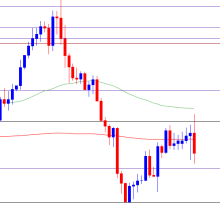Description
Swing trading is a trading style that focuses on capturing price moves or “swings” over a period of several days to weeks. It allows traders to take advantage of short- to medium-term market movements without needing to monitor their trades constantly. Below is a comprehensive swing trading strategy designed to help you navigate the Forex market effectively.
1. Market Analysis
- Select Currency Pairs: Focus on currency pairs that exhibit clear trends and sufficient volatility. Major pairs such as EUR/USD, GBP/USD, and USD/JPY are often ideal due to their liquidity.
- Identify the Market Trend: Use a combination of long-term and short-term charts (daily and 4-hour) to identify the overall market trend. Look for higher highs and higher lows in an uptrend, and lower highs and lower lows in a downtrend.
2. Technical Analysis
- Chart Patterns: Identify key chart patterns such as head and shoulders, double tops/bottoms, and triangles. These patterns can signal potential reversals or continuations.
- Indicators: Utilize indicators like Moving Averages (MA), Average True Range (ATR), and the Relative Strength Index (RSI) to confirm trends and identify potential entry and exit points. For example, consider using the 50-period and 200-period moving averages to identify trend direction.
3. Entry and Exit Points
- Define Entry Criteria: Enter a trade when the price shows a clear reversal or continuation signal. For instance, a bullish candlestick pattern at a support level may signal an entry point for a long position.
- Set Stop-Loss and Take-Profit Levels: Establish a stop-loss order to limit potential losses, typically placed below the most recent swing low for long positions or above the swing high for short positions. Set a take-profit target based on a risk-reward ratio of at least 1:2 or 1:3.
4. Risk Management
- Position Sizing: Determine your position size based on your risk tolerance and account size. Aim to risk no more than 1-2% of your trading capital on any single trade.
- Diversification: Spread your risk across multiple trades and currency pairs to avoid overexposure to a single position.
5. Trading Plan
- Create a Trading Journal: Keep a record of all your trades, including entry and exit points, trade rationale, and outcomes. This will help you analyze your performance and make informed adjustments to your strategy.
- Review and Adapt: Regularly review your trades and strategies to identify what works and what doesn’t. Adapt your approach based on your findings and evolving market conditions.
6. Patience and Discipline
- Avoid Overtrading: Swing trading requires patience. Avoid jumping into trades without sufficient analysis or rationale. Stick to your trading plan and only enter positions that meet your criteria.
- Be Prepared for Market Volatility: Understand that swings can be influenced by unexpected news events or economic data releases. Be prepared for potential fluctuations and adjust your stops accordingly.









Reviews
There are no reviews yet.